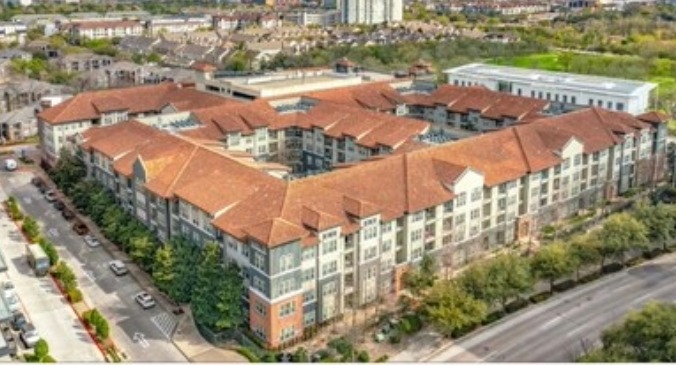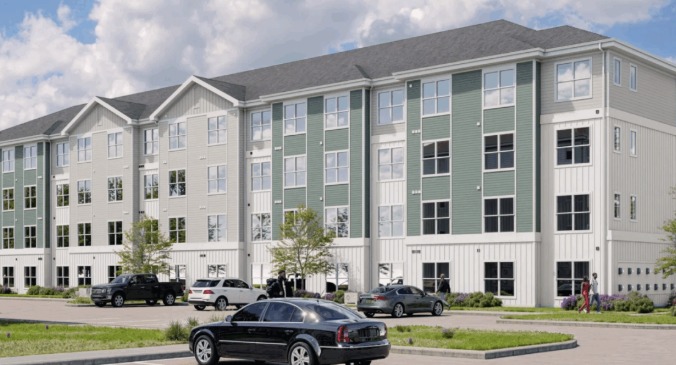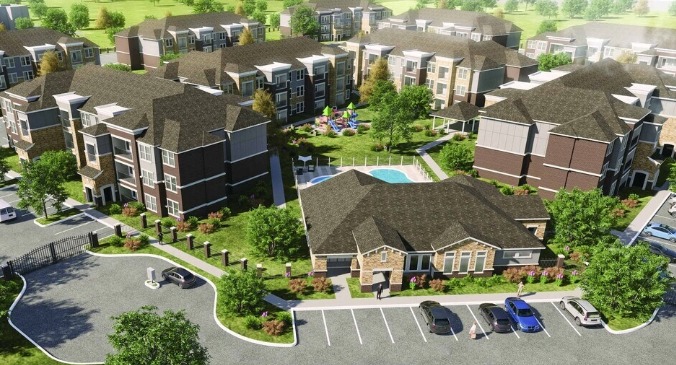Florida-based developer, David Meunier rehabilitates properties that are neglected or abandoned into decent, respectable, even stylish residences. A self described “one-man show,” Meunier builds value in each project for the neighborhood and the resident.
Meunier’s first project set the tone for his future in urban revitalization. The Wynwood Village, 46 apartment units, is located in a burgeoning area now considered Miami’s leading art gallery district. The building had once been in the press for being shut down by the state for rat infestation, water seepage, hazardous wiring, lack of hot water, broken windows and a host of other problems. “The complex was definitely a long-time negative contributor to the quality of life in Wynwood,” City of Miami Administrator Christine Morales stated.
Bringing The Wynwood Village up to code was only half of Meunier’s vision. “I wanted to not just bring the building up to code, but make it a warm and comfortable place to live. The residents may not have much money, but they deserve a home that’s nice, clean and respectable.”
Meunier took on the challenge of turning community blight into an asset, involving local residents in the revitalization. A young local artist painted The Wynwood Village exterior with a mural to connect with the community. Meunier rehabilitated the entire property, while creating affordable, quality apartments with ceramic tile floors, air conditioning, fully equipped kitchens, laundry rooms, 24-hour video surveillance, a privacy fence, and an onsite manager. Meunier also worked as a liaison for the families and individuals by helping them with the application process to obtain housing. Going even a step further, Meunier offered qualified Section-8 applicants $300 in cash for the move.
Today, the once condemned property has hope and the surrounding area promises continued growth as a cultural center in Miami. There are already over 40 art galleries and studios in the neighborhood, and the thriving retail and residential development of Midtown Miami is nearby. Property in Wynwood is currently valued at $120 to $150 dollars per square foot.
Meunier found himself in Overtown, one of Miami’s oldest neighborhoods, for his next project. Overtown has experienced economic, physical, and social decay since construction of the I-95 highway cut through the neighborhood. Until recently, there was little investment interest from developers.
Once more, where others saw desolation, Meunier saw an opportunity. Building on his experience in Wynwood, Meunier took on a new challenge presented by a small cluster of Art Deco-inspired buildings on a beleaguered corner. The properties consisted of forty one-bedroom, one-bath units, and 8 two-bedroom, one-bath units. The property was unlivable.
He renovated everything, upgrading the tenants to the point where his gross return range on his original investment was in the 38 to 42 percent range, and then offered the properties for resale. “I upgraded the residents to the point where it took $1.55 million in self-financing to completely rehabilitate, bring everything up to code, and pay more than $100,000 in back tax liens.” The property had accrued over $1 million in fines.
Meunier went before a mitigation board to explain his plan and the fines were dropped to $12,500.
According to Overtown Net Administrator Kristopher Smith, Meunier helped launch Miami urban renewal. “David’s work is part of the larger neighborhood revitalization with his continued efforts to improve housing and opportunities for residents.”
Meunier worked directly with neighborhood enhancement and law enforcement teams throughout the project. Continuing his commitment to public art, Meunier worked with African-born Bayunga Kaleuka, a local artist who designed and completed Afro-Caribbean themed murals on the buildings. Miami Police Capt. Bernard Johnson said, “The homes range from a tiny 450 square feet, to a modest 600 square feet, but are ideal for low-income families — especially single parents, elderly, Veterans, AIDS patients, and those on disability.”
After completion of his early rental projects, Meunier turned his attention to melding multifamily condominium conversion with his focus on affordability and quality of life. Maintaining his strategy of buying properties and turning them from blight to urban chic, Meunier’s vision is to provide first-time home owners and young professionals the opportunity to buy modern units in desirable locations.
Meunier carefully monitors cash flow for the right time to buy a property, and typically holds the property for a year before selling. This strategy keeps him in the 15 percent bracket for capital gains taxes. As he closes out a property, he rolls profit into a new one, at the rate of one every quarter.
His first condo project, Bellagio, is located in Miami’s Upper Eastside neighborhood, just west of Biscayne Boulevard and north of the historic Morningside neighborhood. Meunier bought the 15-unit apartment complex property for $915,000. The small parcel included nine units with two-level interiors, revamped wood and steel kitchen areas, sleek modern lighting, and stone bathrooms. He installed a pool as part of the renovation, and prices came it at $135,000 to $160,000 for units that averaged about 600 square feet.
Meunier is working on two condo conversion projects: Kennedy House, a 17-unit community located in Miami’s next major neighborhood revival and Casa Nina, situated in one of St. Petersburg’s most enchanting neighborhoods, Old Northeast.
The Kennedy House sits amidst an eclectic blend of private homes, waterfront restaurants, and hip stores. The Mediterranean-Deco style building is in the process of conversion to contemporary luxury condos designed for first-time buying professionals. The 34-year-old property was purchased for $1.25 million; prices will start at $199,000.
Casa Nina is located among historic buildings in an established area close to downtown St. Petersburg, considered by locals as prime real estate. Each 650 square foot unit is priced from the mid $150,000 range, with the monthly condominium maintenance fees capped at $100 per month. The idea is that the low maintenance fee will attract desired residents.
Meunier’s development ethic is to produce a product that can renew and revitalize urban cores, building community in established neighborhoods. “I don’t want to sell to someone who is speculating. I want real people who want to live here, not someone who wants to flip it,” he said.
Profitability and pride are not mutually exclusive. With a clear vision, multifamily development has the potential to improve communities and lives as evidenced by Meunier’s work.
Look closer at the cocoon. There’s a butterfly there.
Author: JACQUELINE BATTAGELLO
















